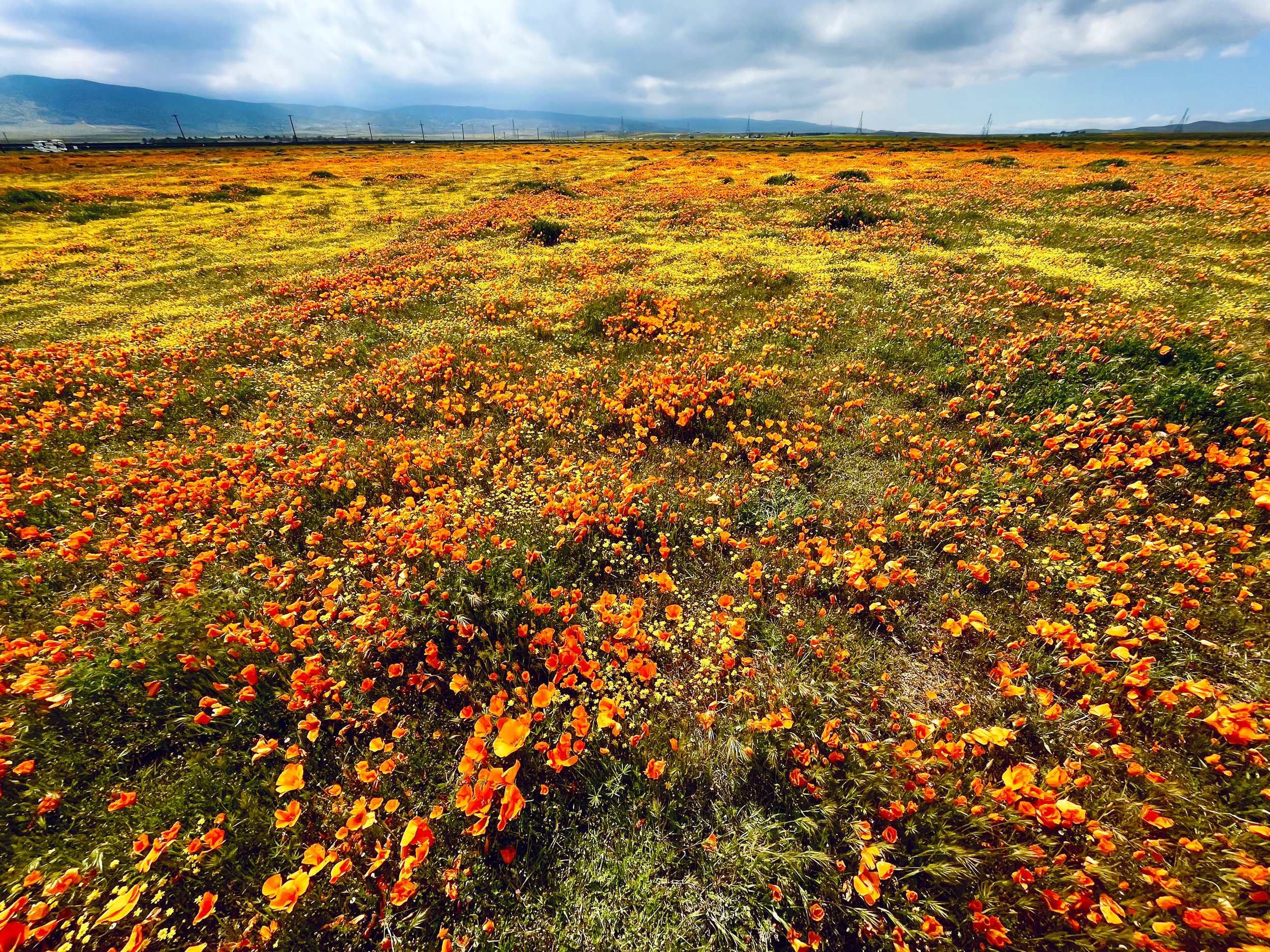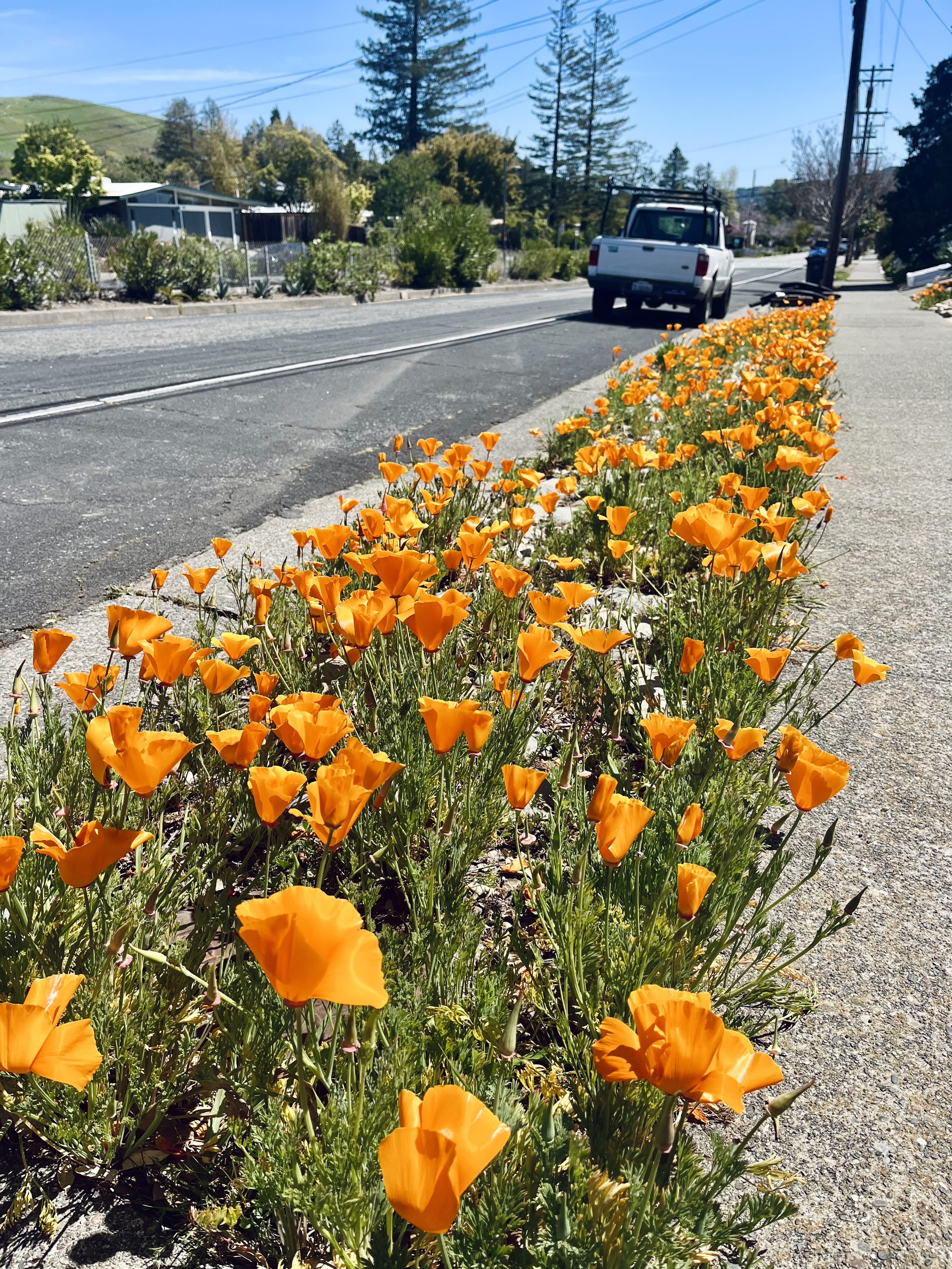FIELD NOTES
Superblooms
Thoughts From Visiting California’s Fields of Flowers
Superblooms are rare botanical phenomena that happen when spring comes alive with explosions of wildflowers so vast that they cover hundreds of miles.
Seeds from native wildflowers can stay dormant in deserts and grasslands for years, waiting until the perfect conditions align to germinate and transform them into magical seas of colorful, flowing blossoms.
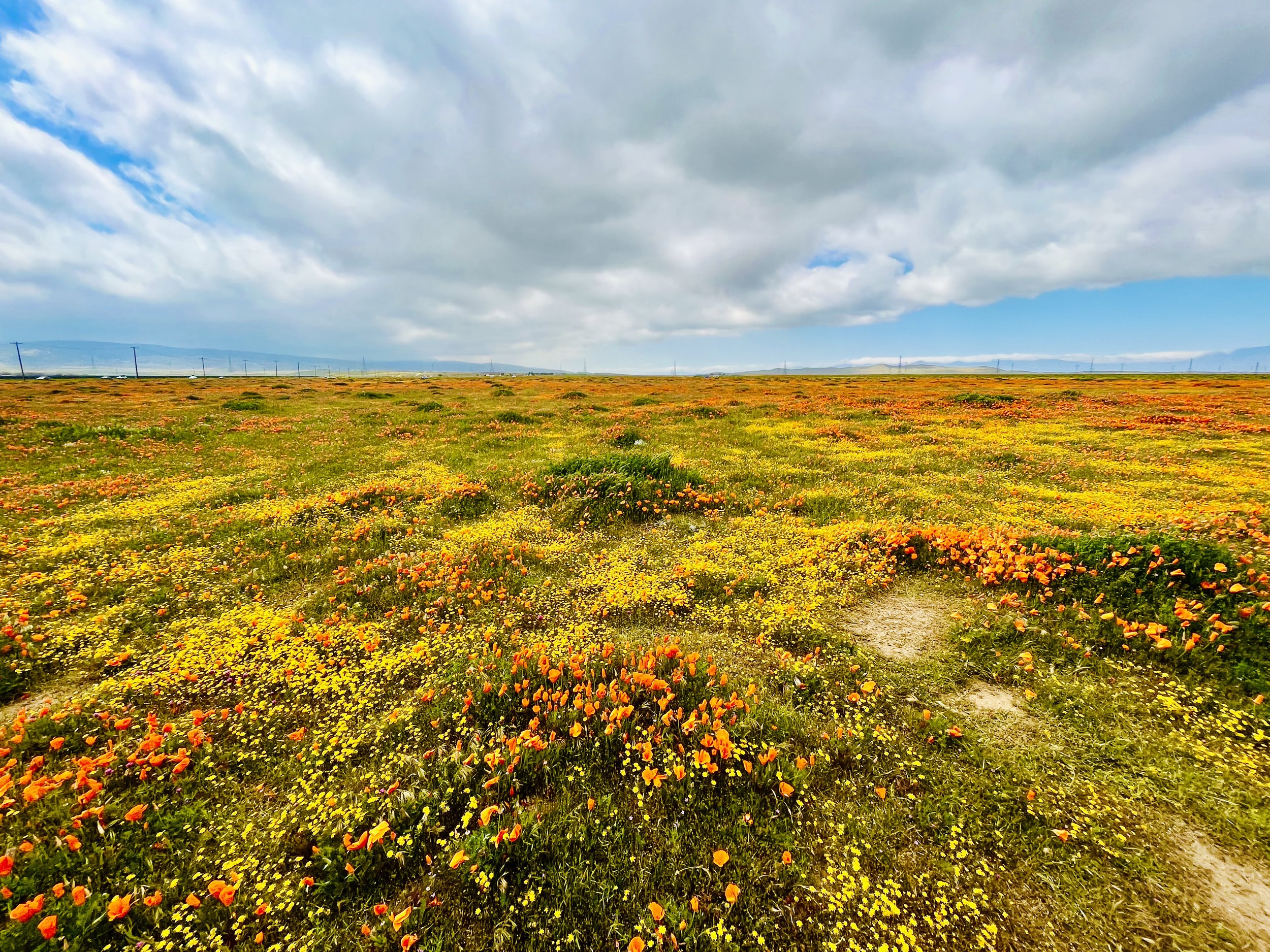
Superblooms are also very much in the news, as they’re happening all over the West coast and beyond (and are so large that they’re visible from space, as recent photos from NASA show).
Generally, they only happen about once each decade or so, and we’re extremely fortunate to see superblooms bursting in color again this spring and blanketing so many parts of California – adding yet another layer of meaning to the Golden State nickname.
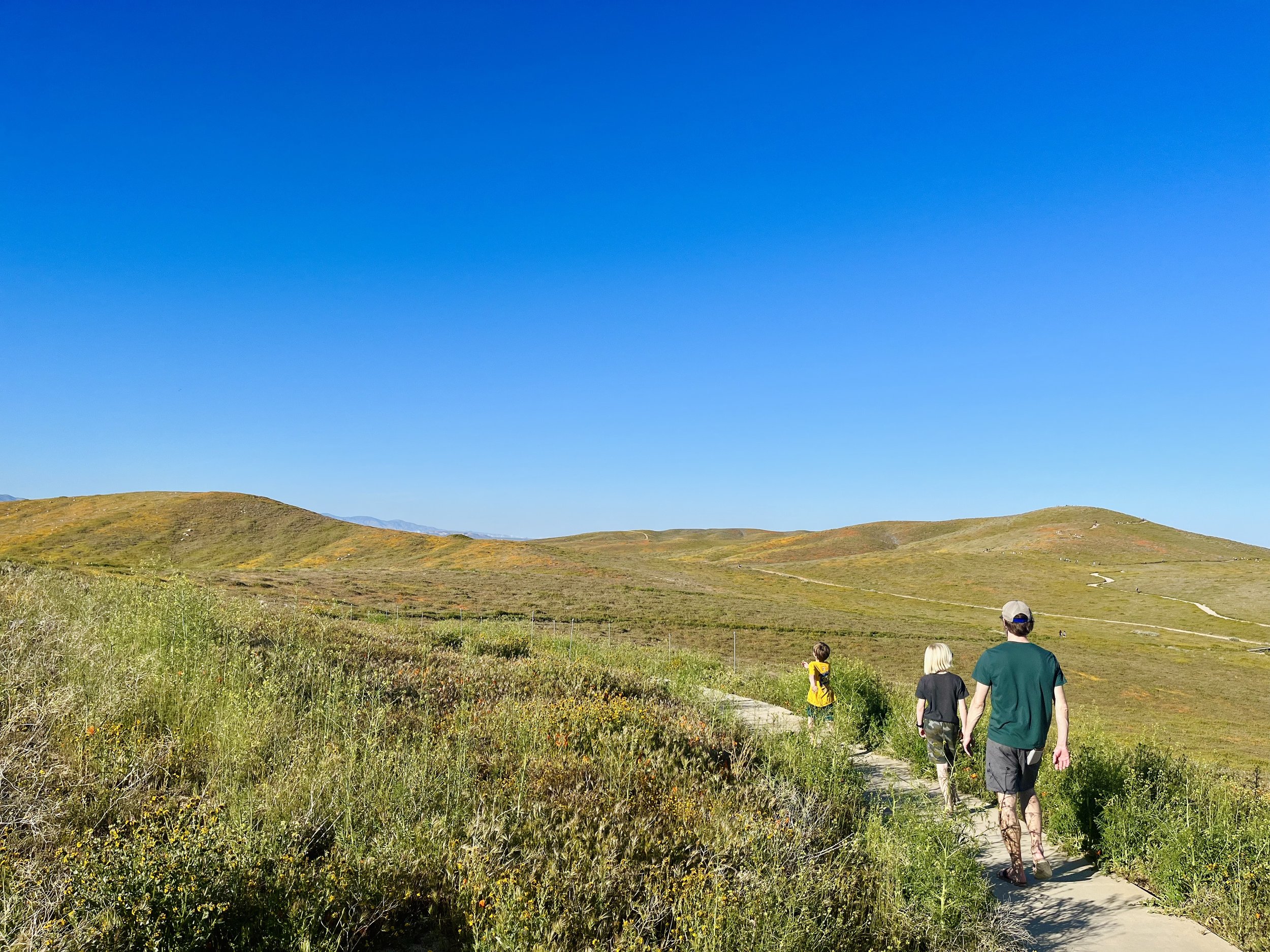
When the seed of the idea for Superbloom as a brand, collective, and community germinated over a year ago, never in my wildest dreams did I think that it would be something that would launch just as an *actual* superbloom season would be happening.
The potential for that serendipitous timing with nature’s superblooms also seemed like a great reason to finally road-trip down from the Bay Area to visit the Antelope Valley Poppy Preserve in Southern California, which is something I’d been wanting to do for over a decade, following my move out to the West Coast from New York.
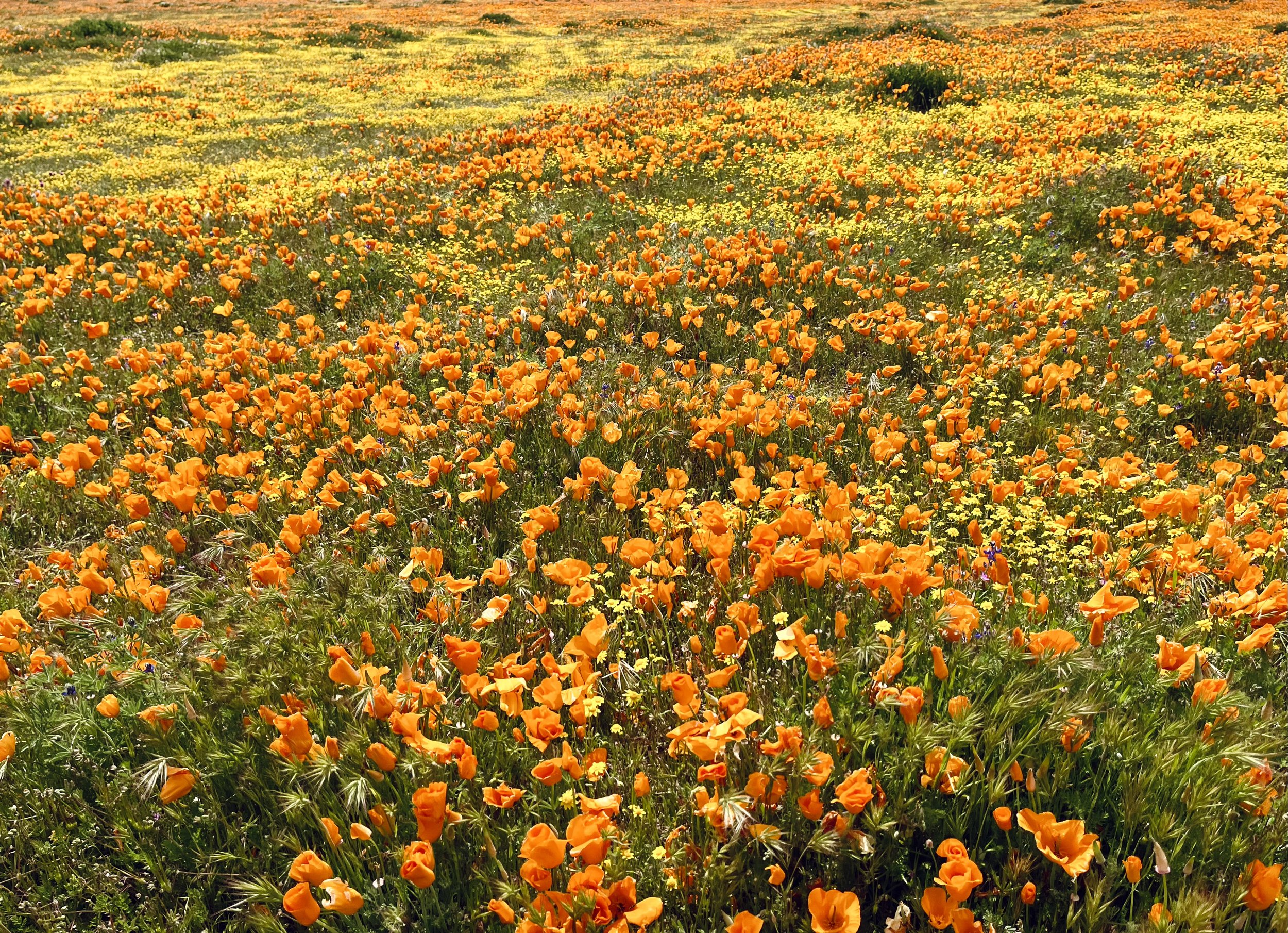
Being fortunate enough to experience these recent superblooms sparked a few loosely connected thoughts while wandering around the expanse of blooming flower fields…
Perception & Place
Seeing entire deserts, fields, and hillsides spring back to life after several years of drought could be viewed as a before-and-after situation, but while environments often appear on the surface to be still, barren, and lifeless, they actually have so much potential and a lot going on beneath what can be outwardly seen.
Knowing that superblooms aren’t limited to specific geographic areas. Since the term “superbloom” isn’t an actual scientific one, but more of a collective understanding of natural abundance and magnificence, there’s a lot of latitude in defining it. In California, superblooms are absolutely happening in parks and preserves throughout the state, but they’re also happening on random hillsides, empty lots, and even alongside the broken-up highways and pothole-filled backroads we drove through. The ability of wildflowers to germinate and bloom in cracks in the sidewalk, around rows of nondescript storage units, and even through unfortunate piles of litter, is pretty amazing.
Understanding that as much as areas can be set aside for a massive bloom to occur, nature doesn’t follow any borders that humans have created — the fields in the community that surrounds the actual state preserve itself were even more replete with blooms.
Resilience
Knowing that even in a period of unprecedented drought, the dormant seeds had what they needed within them, and that a series of rains this year — and sometimes intense storms and floods — provided one of the main elements needed to unlock their abundance.
Remembering that flowers move at their own pace and bloom wherever things work best at a given time — and that they don’t follow a recipe or list of instructions for how or when anyone else thinks they should bloom.
Knowing that even with the supposed elements for the right conditions, even the experts couldn’t be certain whether a superbloom would actually happen, or exactly where it might occur.
Interconnectedness
Recognizing that those floods and storms also damaged specific areas and came at a very steep cost to communities and individuals in other ways — and that so many people are disproportionately continuing to feel those impacts today.
Being reminded that those heavy rains also triggered other grasses and weeds that have grown right alongside the poppies — and that also have the ability to take over and keep them from fully thriving.
Knowing that the nature of superblooms also fluctuates between resilience and fragility, as flowers can also be affected by being trampled on and by the varying conditions around them, with blooms closing up in cold and windy weather, then opening up fully again in the sunlight.
Thinking about who gets to engage with larger natural spaces — who has access, who has resources, and who has been on the land since time immemorial and stewarded it with care, but often without external recognition for doing so.
Considering who gets lauded for outdoor exploration and recreation, and who gets shamed for it, given so many of the assumptions in current conversations about who’s visiting superblooms. Knowing that there’s a wide spectrum of people encouraging crowds to engage and learn more, others reminding them to do so responsibly, and still others who are cutting off access to some some places altogether. Thinking about the lack of recognition that nature — and beauty — are for everyone, and that ultimately, no one gets to judge who’s worthy of engaging with it based on highly subjective opinions, random rules, or scarcity mindsets.
Seeing that nature needs to be not just appreciated in words and photos, but actively cared for with an understanding of the reciprocity required for it to thrive.
Perspective
Stopping for a bit of perspective of a truly stunning natural event in comparison to the constructs and systems that humans have invented, ones that often keep us looking forward and running toward goals instead of pausing to witness all that already exists.
Remembering that our deep connections to the natural world that’s all around us can also remind us that ordinary things can actually be magical, whether en masse or in their singularity, if only we stop to look, listen, and appreciate them. Thinking about the idea of “sidewalk superblooms,” or finding moments and instances of beauty everywhere, no matter how small. As the poet Mary Oliver wrote, “Attention is the beginning of devotion.”
And finally, realizing that even if I was able to get the perfect photos of those vast seas of my favorite flowers, it wouldn’t be during some idyllic sunny afternoon. With a chilly wind whipping up and intense clouds gathering, we were all cranky, tired, and fighting off seasonal colds as we traveled through the fields. All of which was a good reminder that even though things don’t always happen in the way that we’ve pictured them in our heads, there’s still a ton of goodness to be found by releasing expectations and surrendering to the beauty of the present, regardless of conditions.
For specific superbloom-like viewing spots for 2023 wildflower blooms in California and Arizona, please see the collected locations on this map.
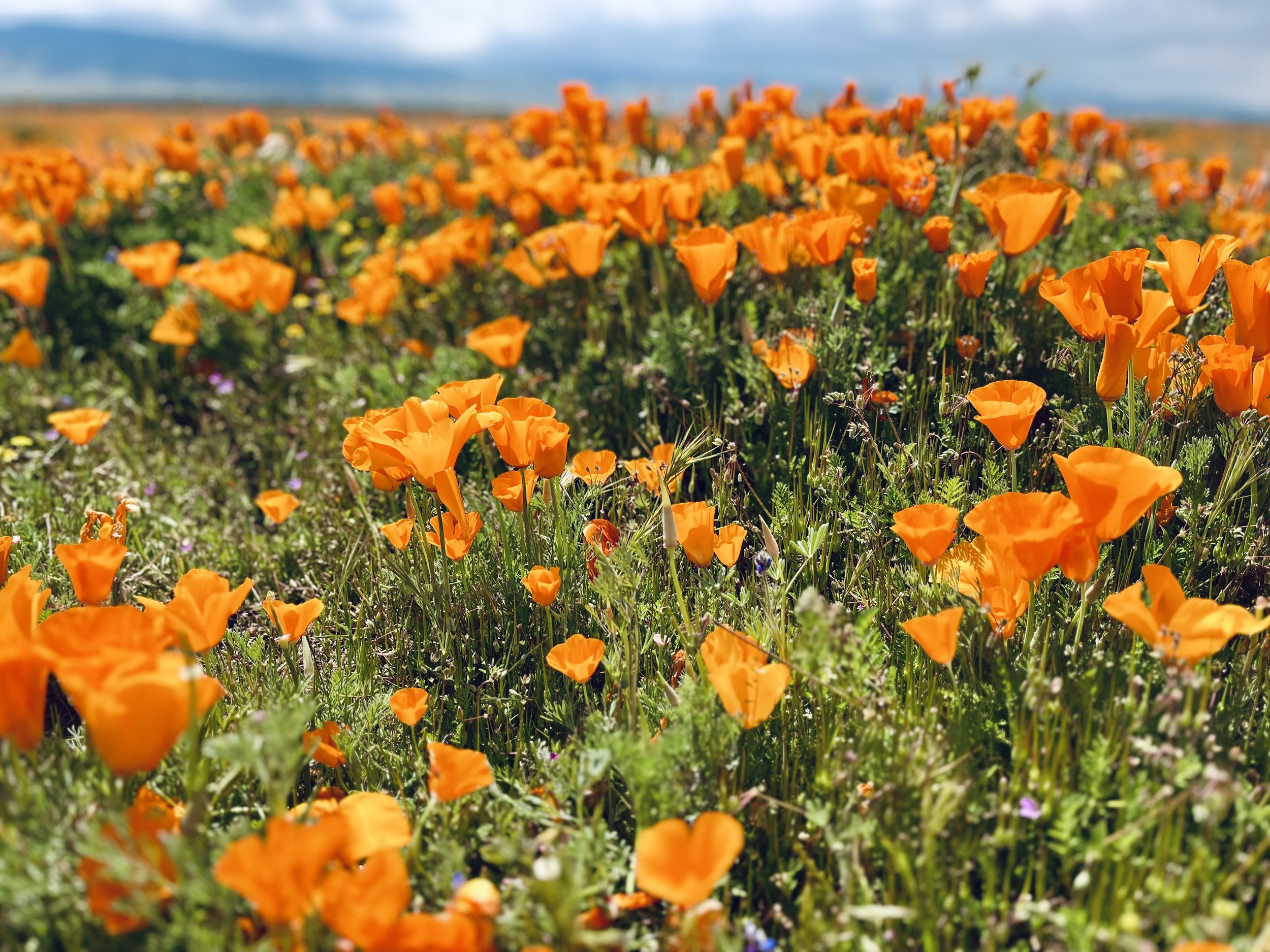
“Wildflowers don't care where they grow.”
- Dolly Parton
Photos taken at the Antelope Valley California Poppy Reserve, April 9 - 13, 2023
We respect your privacy, and when you click “Sign Up,” you are confirming that you agree that information you submit will be protected and used as permitted in our privacy policy and terms. If you do not agree to any of these terms, you may not submit this form.




